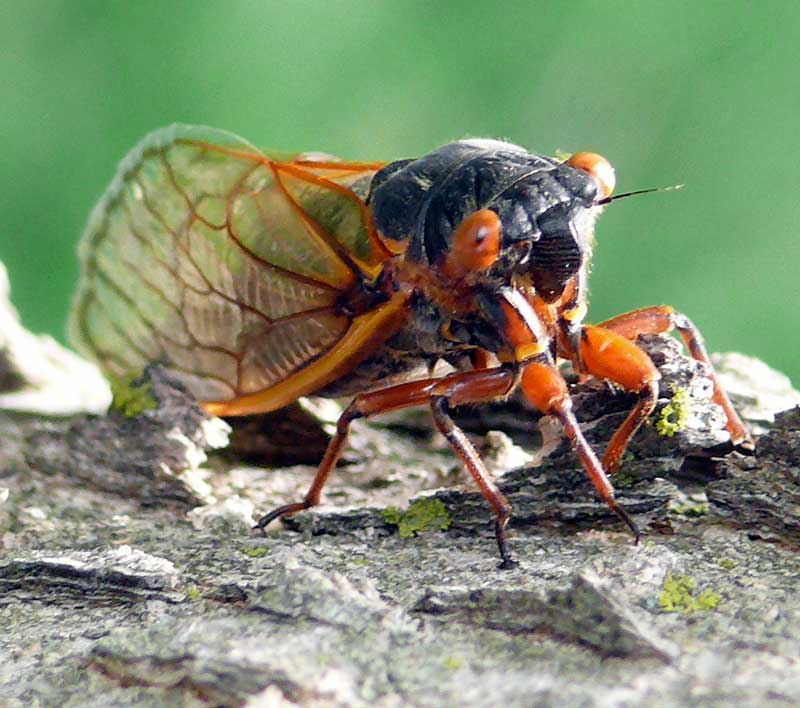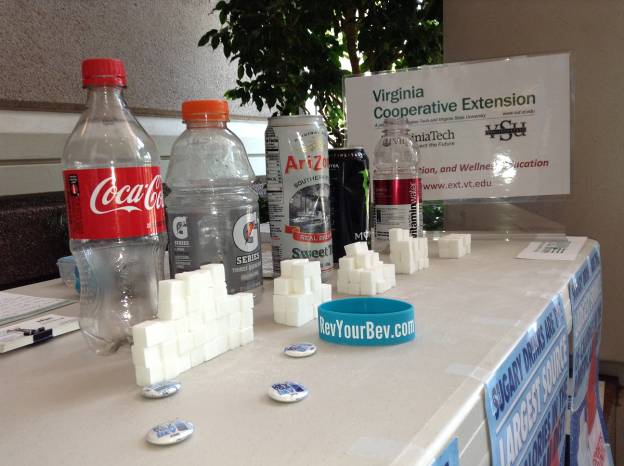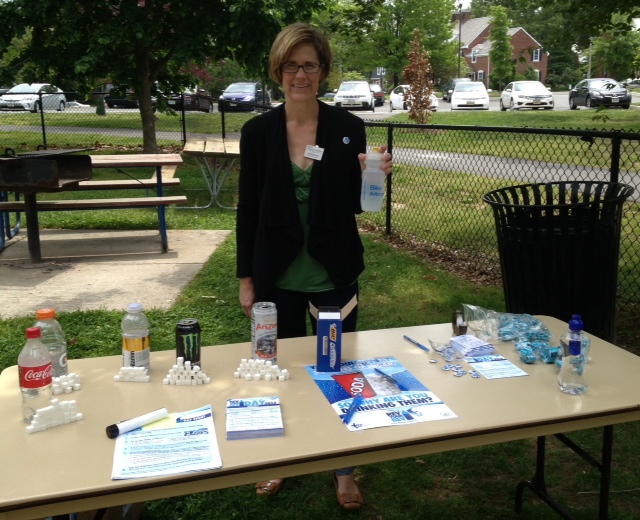The buzzing insect drone of summer time is either a welcome harbinger of memories of warm evening picnics and summer fun or a frightening reminder of the destruction and damage to tree branches caused by the annual and periodic cicada. Every year as the weather heats up into mid May or June and continuing into August, we will hear the droning whine of these large insects as they go about their business of mating and laying eggs. Only the males make the sounds by rapidly flexing an abdominal tymbal muscle that rattles two hardened tymbal membranes against each other. Each species has a distinctive sound.
Although often called ‘locusts’ they are more closely related to leaf hoppers and spittle bugs. In some parts of the world they are eaten and the females are preferred for being ‘meatier’. Sometimes called ‘dog day’ cicadas, some annual cicadas that live from 2-5 years, hatch every year emerging from the soil as nymphs to climb up into trees shedding their exoskeletons as they mature into winged adults. While most species of cicada are what we call annual or unsynchronized, there are 3 species of 17 year periodic cicadas in the genus Magicicada that are common in northern areas. These synchronized periodic cicadas, or broods as they are called, belong usually to one of three species: M. septendecim, M. cassini, and M. septendecula. This factsheet http://pubs.ext.vt.edu/444/444-276/444-276.html contains maps that show the anticipated spread of the 2013 hatch. Brood II, while concentrated west of here, may result in increased numbers here in Northern VA. Brood X is the biggest hatch in the Northern VA-DC-MD region and is not due again until 2021 unless a phenomena called ’straggling’ occurs and then we might get part of that hatch 4 years early in 2017.
Damage by both annual and periodic cicadas is done mainly by the nymphs feeding on roots and by the female using her ovipositor to cut open a place to lay her eggs. Up to 400 eggs are typically laid 2-12 to a site at 40-50 sites. While not highly selective, trees often chosen for oviposition include maple, oak, hickory, beech, ash, dogwood, hawthorn, magnolia, willow, apple, peach, cherry and pear. Flowers, vines and shrubs include: Rose of Sharon, rose, raspberry, grape, black-eyed Susan, hollies, spirea, rhododendron, viburnum, junipers, and arborvitae. Branches ¼”- ½” in diameter are generally chosen and the damage usually results in ‘flagging’ or, the death of the end of the branch. http://www.uri.edu/ce/factsheets/prints/cicada.html After 6-10 weeks, eggs hatch and the ant sized nymphs fall to the ground to dig burrows 6-18” deep.
Control of damage to young trees is important and difficult to achieve. Netting to exclude the adult cicadas is helpful. Delay setting out new young trees up to 2 years before a major hatch of periodic cicadas. Remove egg masses as you find them and prune damaged branch ends after the invasion is over.
Virginia Tech has this publication http://www.virginiafruit.ento.vt.edu/cicada.html geared towards fruit producers but contains good info for all. If you would like to see maps of various brood hatch locations and photos of what cicadas look like here: http://insects.ummz.lsa.umich.edu/fauna/michigan_cicadas/Periodical/
Ohio State has good information here on controlling damage from cicadas here: http://bugs.osu.edu/~bugdoc/PerioCicada/PeriCicadaControl.htm
Virginia 
Arlington Cooperative Extension staff can provide more information about these and other summer outdoor insect pests. You can get help finding your local Virginia Cooperative Extension office here: http://www.ext.vt.edu/offices/










